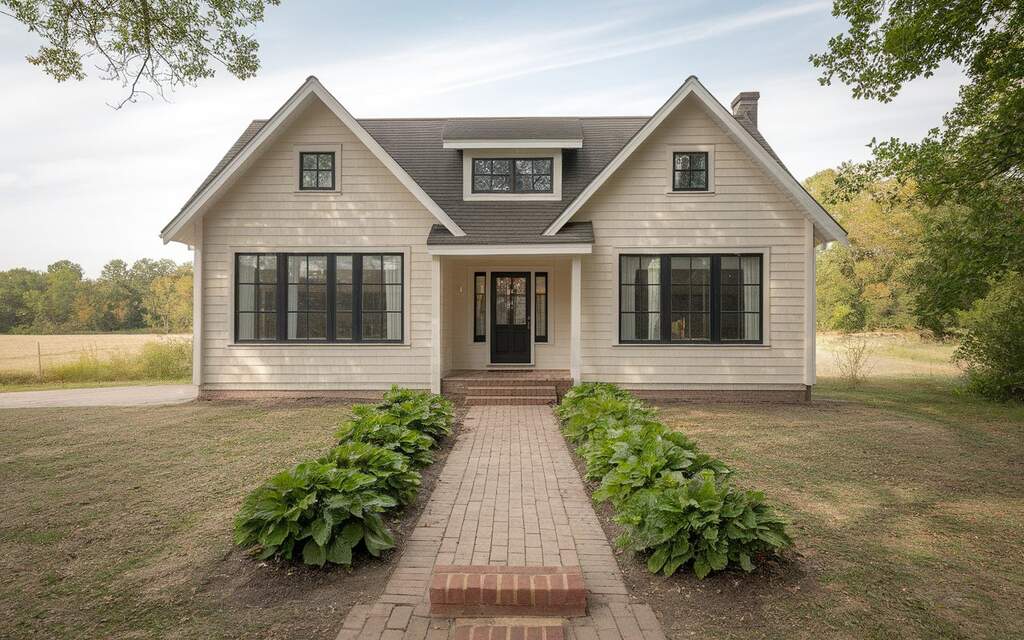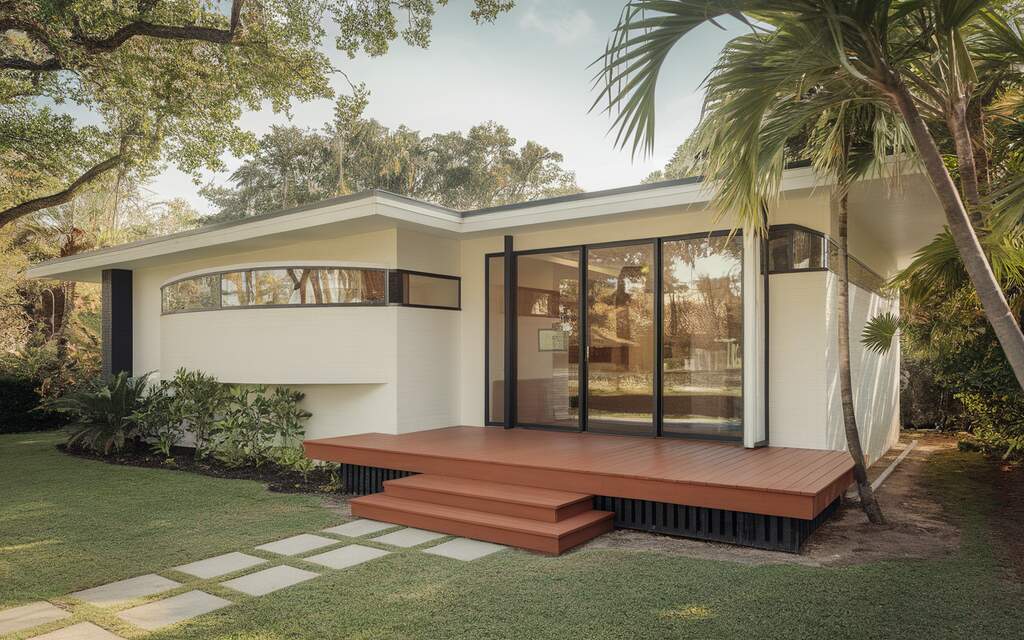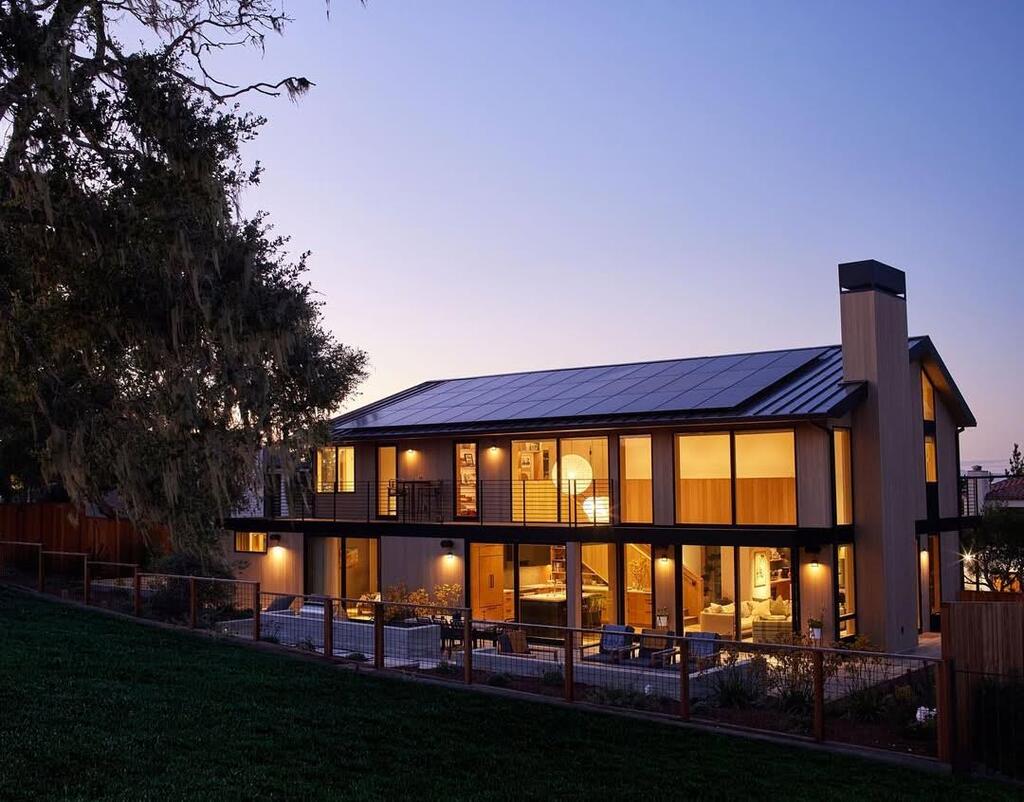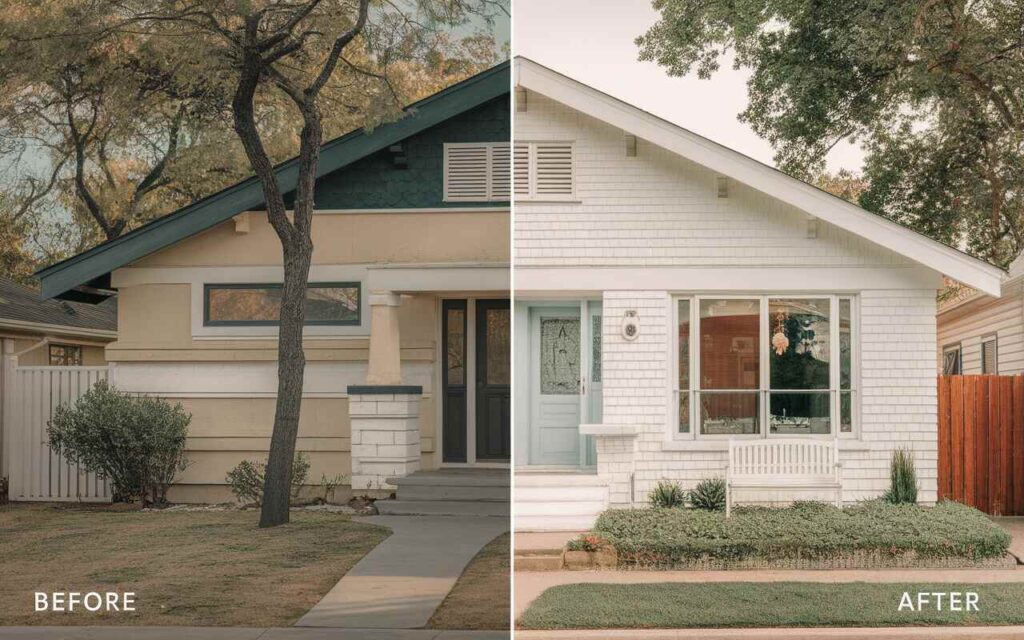In my experience, the 1980s were bold and experimental in design and architecture. My childhood home, an archetypal house of the era, was characterized by the distinct style of the period. It featured a riotous color scheme, angular shapes, and a flat roof.
Of course, those were all the rage then, but now, don’t they sound a little passé? I’ve seen many 80s houses with outdated exteriors, but don’t let that fool you. These homes often have solid structures, full of potential.
With careful planning and wise design choices, we can transform these 80s houses into modern, contemporary homes. In this blog, I’ll share practical tips for exterior makeovers and design ideas for creating stunning architectural wonders.
A Venture into 80s Architectural Style
Having lived in the 1980s, I vividly remember the type of homes that were common then. Bright colors, shapes, and flat roofs characterize homes in the 1980s once avant-garde and now largely passé.
A style that has come to be widely referred to as “Postmodern” was a reaction to minimalist designs developed during the mid-century modern era. Architectural styles such as “McMansion” and “Ranch House” were my next favorites.
From my memory, my neighbor’s house was one excellent example of 80s architecture. It was very bold with teal walls, a triangular roofline, and big windows. Its textured stucco walls and metal accents added charm, but over time, it was something people just could not stand any longer.
The Building Blocks of 80s Homes

A home’s exterior will likely be a bold color scheme, a flat or low-pitched roof, big geometric windows, and stucco, brick, and wood for the materials in an 80s style. My experience implies that popular exterior materials and finishes used for an 80s-style home are stucco, brick, wood siding, metal accents, and large glass windows. Through this key characteristic, you will know how to determine if it is an 80s home and appreciate its distinctiveness.
If you want to revitalize your 80s home, then an 80s house exterior makeover would come in handy. This includes updating the color palette or replacing outdated materials with new ones while adding modern elements to go well with the style it already has.
Setting a Realistic Budget and Timeline for Your 80s Home Renovation
Knowing your 80s features is exactly what you need to do, and now you can plan the makeover. When planning our 80s house exterior makeover, I knew that we had set ourselves up with a realistic budget and time.
It was critical to outline how big our project would be, including materials, labor, and unexpected costs. Setting a realistic timeline helped avoid delays and kept us in line. One should follow the following steps:
-
Consult an Architect
-
Find a Contractor
-
Hire an Interior Designer
An architect is necessary for the conceptual design stage of your 80s home renovation. I was hesitant at first to contact it myself, but my friend opposed my idea. They will develop a design concept that pays homage to the original architectural style while bringing modern elements to it. In addition, architects produce detailed blueprints and construction documents that will ensure the project meets local zoning and building codes.
Once the design has been finalized, a good contractor is needed to oversee construction. A contractor will administer subcontractors, coordinate when people work, and keep the project on schedule and within budget.
Also, they will handle getting all the necessary permits and inspections. And especially, I remember that my contractor had reduced the total cost of operation by 10-20%.
For an 80s home, to be fully transformed, an interior designer can offer advice in choosing the right materials, colors, and furniture. I remember saving $2500 for my kitchen area, and on top of that, the final structure looked better than I had imagined. The design will be an entire cohesive plan that matches well with 80s architecture while providing a modern touch.
Choosing the Right Color for Your 80s Contemporary House

I am really surprised how the 80s house changes in look. When designing an exterior facelift for my 80s house, I selected a neutral base color for the siding white so that bold accents could work effectively and be well seen against it. For this, I settled on navy as my accent color.
A bold front door will make a statement. While I considered painting mine a bright red, I decided on a deep navy blue. Smaller accents, such as colorful planters and outdoor furniture, add pops of color in this way. Muted trim colors, such as white, balance out the bolder color choices for a cohesive appearance.
Incorporate popular contemporary color trends like earthy tones (terracotta, burnt orange, olive green), moody hues (navy, charcoal, deep green), and bright accents (yellow, orange, pink). Also, categorize the following:
- Upgrade your materials: I had to replace old siding material, including fiber cement or vinyl modern exterior for updating. Update trim with cleaner line orientation with added cladding materials, such as stone brick, or metal.
- Update windows and doors: Replace outdated windows with energy-efficient versions. P had to Install modern window treatments and update my exterior door to look fashionable with great materials and fabulous hardware.
- Craft a pretty front door: Create a Welcoming Entryway Choose modern front door styles and stylish hardware. I used my previous gardening stuff such as my plants, shrubs, or trees in your entry; lighting can include wall sconces, pendant lights, or spotlights.
- Modernize Your Facade: Replace old siding with new materials, update trim with clean lines, and add cladding materials for a modern touch. I use pink ivory wood for some decoration statues and a side table.
Breathing New Life into Your 80s Home

I know that many ’80s contemporary houses have features that are now outdated. But with my expertise, I had transformed my 80s home into a modern and stylish residence through careful planning and strategic renovations.
It is these same items that fit best in terms of trends with the current home decor. As mentioned, I worked on these parameters:
1. Window and Door Upgrades
To enhance both the aesthetics and energy efficiency of our 80s contemporary house, we replaced the old windows with new double-pane windows that come with energy-saving Low-E coatings.
I complemented these with classic shutters, adding a touch of traditional elegance and privacy. We also upgraded our exterior doors to a new style using durable materials such as fiberglass and stylish hardware.
2. Roof and Siding Transformation
We gave new life to our house exterior with a new, up-to-date metal roof on it, which also serves for better energy efficiency than an old one and more to that, adds to its attractiveness.
To finally complete its exterior look, we fitted high-quality fiber cement siding in neutral shade according to the home architecture to enhance the landscaping work done around it. These fibers are said to last as long as 50 years, hence preserving the look longer.
3. Inviting Outdoor Spaces
I also transformed our outdoor living spaces into inviting areas by designing a beautiful front yard with colorful flowers and shrubs, a cozy patio seating arrangement with an outdoor fire pit, water features, and strategic placement of outdoor lighting. I used plants such as lavender, rosemary, and succulents from my previous home to add more natural colors to the environment.
4. Successful Inspiration from Home Makeovers in the 80s
I’ve witnessed many spectacular 80s home transformations, where old features were replaced with more modern materials and designs. One of the most impressive was a house with a full exterior makeover: new siding, updated windows and doors, and elegant landscaping.
Through this transformation, I was able to see firsthand how an 80s home can be revitalized into a modern and stylish house.
Conclusion
Absolutely! An ’80s home can be transformed beautifully with the right approach. Start by identifying key architectural elements worth preserving. Vaulted ceilings, large windows, and open floor plans can be assets.
Update materials and finishes. Swap outdated wood paneling for sleek drywall or painted wainscoting. Refresh popcorn ceilings with a smooth finish. Choose a neutral color palette with bold accents for a modern touch.
Revamp the kitchen and bathrooms. Flat-panel cabinets, quartz countertops, and matte black fixtures create a stylish update.
Enhance curb appeal. Modern landscaping, fresh paint, and a streamlined entryway can make a huge difference.
FAQs
How Can I Make My 80s Home More Energy-efficient and Sustainable?
Prioritize energy efficiency by choosing materials like low-E glass, high-performance insulation, and energy-star-rated appliances. Consider using eco-friendly materials like recycled wood, bamboo, or sustainable building products.
What Are Some Modern Design Principles I Can Incorporate Into My 80s Home’s Exterior?
Embrace a minimalist approach by decluttering your exterior, creating symmetry and balance, and using vertical lines to add height and elegance.
How Can I Enhance My Outdoor Living Spaces?
Incorporate native plants into your landscaping, choose drought-tolerant plants, use outdoor lighting for ambiance and security, and consider adding an outdoor kitchen.

